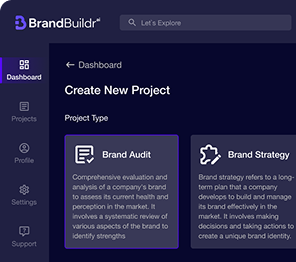With technology advancing at an unprecedented pace, businesses can no longer afford to rely on generic software solutions. Custom software development involves designing, building, and deploying software tailored to an organization’s specific needs. In the USA, companies are increasingly investing in custom solutions to drive innovation, streamline operations, and stay ahead of the competition. Off-the-shelf software often lacks the precise features businesses require, making custom-built solutions the preferred choice for achieving strategic goals.

Why Choose Custom Software Development?
Software.org engaged The Economist Intelligence Unit (EIU) to conduct a study analyzing the expanding economic influence of software across the United States. The in-depth report revealed that software contributed over USD 1.14 trillion to the nation’s value-added GDP — a 6.4% increase within just two years. Also, according to an article by Consulting.us, the need for custom software development is on the rise, with the global market projected to hit $120 billion by 2026.
Also, according to an article by Consulting.us, the need for custom software development is on the rise, with the global market projected to hit $120 billion by 2026.
Off-the-shelf software offers a tempting quick fix, but its limitations can hinder long-term growth. One of the most significant drawbacks is the lack of flexibility. These solutions are designed to cater to a broad audience, meaning they often include features that are irrelevant to your specific needs while lacking functionalities that are crucial. Moreover, off-the-shelf software can be difficult to integrate with existing systems, leading to compatibility issues and data silos. Scalability is another major concern; as your business grows and evolves, off-the-shelf software may not be able to adapt to your changing requirements, forcing you to migrate to a new system and disrupt your operations.

Custom software development provides a superior alternative, offering a host of benefits that can transform your business. First and foremost, custom solutions offer a tailored fit. The software is designed to align perfectly with your specific business needs and workflows, addressing your unique challenges and opportunities. This ensures that every feature and function is relevant and contributes to your overall goals.
Scalability is another key advantage. Custom software is built to adapt to your future growth and changing requirements. As your business expands, the software can be easily modified and upgraded to accommodate new users, features, and data volumes. This scalability ensures that your software remains a valuable asset, supporting your business as it evolves.
Furthermore, custom software can provide a significant competitive edge. By developing unique features and functionalities, you can differentiate your business from competitors and offer innovative solutions to your customers. This can lead to increased market share, improved customer loyalty, and enhanced brand recognition.
Finally, custom software can lead to enhanced efficiency. By streamlining processes and automating tasks, you can improve productivity, reduce errors, and free up valuable resources. This can result in significant cost savings and improved profitability. Custom software development empowers businesses to create proprietary solutions that perfectly mirror their operational DNA, giving them a distinct advantage in the marketplace.
Key Custom Software Development Services Explained
Custom software development companies offer a comprehensive suite of services to help businesses create tailored solutions that meet their unique needs. These services encompass the entire software development lifecycle, from initial consultation and planning to ongoing maintenance and support. Let's explore some of the key services in more detail.

Software Consulting
Software consulting plays a crucial role in ensuring that your custom software project is aligned with your business goals and objectives. Consultants work closely with you to deeply understand your business challenges, assess your existing systems, and recommend optimal software solutions. This involves conducting in-depth analyses, identifying areas for improvement, and developing a clear roadmap for your project. Typical deliverables from software consulting engagements include feasibility studies, technology roadmaps, and system architecture designs. These deliverables provide a solid foundation for the subsequent development phases, ensuring that the project is well-defined and aligned with your strategic objectives.
Custom Application Development
Custom application development is the core of the custom software development process. It involves building bespoke applications from the ground up to address unique and complex requirements. This approach allows you to create software that perfectly fits your specific needs, without being constrained by the limitations of off-the-shelf solutions. Modern development frameworks and agile methodologies are typically used to ensure that the development process is efficient, flexible, and responsive to changing requirements. This results in high-quality applications that are scalable, maintainable, and aligned with your business goals.
Web Application Development
Web application development focuses on creating robust and scalable web-based applications for both internal and external use. These applications can range from e-commerce platforms and customer portals to data analytics dashboards and internal management systems. Web applications offer several advantages, including accessibility from any device with an internet connection, ease of deployment and maintenance, and the ability to integrate with other systems. By leveraging modern web technologies and frameworks, custom software development companies can create web applications that are secure, user-friendly, and optimized for performance.
Mobile Application Development
Mobile application development involves developing native and cross-platform mobile apps for iOS and Android platforms. Mobile apps have become an essential tool for businesses to engage with customers, provide services, and streamline internal operations. Whether you need a native app that takes full advantage of the device's capabilities or a cross-platform app that can run on multiple operating systems, custom software development companies can help you create a mobile solution that meets your specific needs. UI/UX design is particularly important for mobile apps, as it directly impacts user engagement and satisfaction.
Legacy System Modernization
Legacy system modernization is the process of updating, refactoring, and migrating outdated software systems to modern technologies. Many businesses rely on legacy systems that are difficult to maintain, lack scalability, and pose security risks. Modernizing these systems can improve performance, security, and maintainability, while also enabling integration with newer technologies. This can involve rewriting the code, migrating the data to a new database, or replacing the entire system with a modern alternative. Legacy system modernization can be a complex undertaking, but it is often necessary to ensure that your business can continue to operate efficiently and securely.
Software Integration
Software integration involves connecting disparate software systems and databases to enable seamless data flow and process automation. This is crucial for businesses that rely on multiple systems to manage different aspects of their operations. By integrating these systems, you can eliminate data silos, improve data accuracy, and streamline workflows. APIs, middleware, and integration platforms are commonly used to facilitate software integration. This allows you to create a unified and cohesive IT environment that supports your business goals.
To learn more about how tailored solutions can propel your business forward, explore our custom software development services.
Benefits of Partnering with US-Based Providers
Choosing a custom software development partner is a critical decision that can significantly impact the success of your project. Collaborating with US-based providers offers several distinct advantages that can mitigate risks and ensure a positive outcome.
One of the primary benefits is clear communication. Minimal language and time zone barriers facilitate seamless interaction and collaboration between your team and the development team. This ensures that requirements are accurately understood, feedback is promptly addressed, and potential issues are quickly resolved. Effective communication is essential for maintaining project momentum and avoiding costly misunderstandings.
Market understanding is another key advantage. US-based providers possess a deep familiarity with the US business landscape, regulations, and customer expectations. This allows them to develop software solutions that are tailored to the specific needs of the US market, increasing the likelihood of adoption and success. They understand the nuances of the local market, ensuring your software resonates with your target audience.
Stringent quality standards are a hallmark of US-based providers. They adhere to high-quality standards and industry best practices, ensuring that the software is reliable, secure, and performs optimally. This commitment to quality reduces the risk of bugs, errors, and security vulnerabilities, protecting your business from potential disruptions and reputational damage.
Finally, IP protection is a critical consideration when outsourcing software development. The US has robust legal frameworks in place to safeguard intellectual property, providing you with greater assurance that your ideas and innovations are protected. This is particularly important for businesses that are developing proprietary software with unique features and functionalities.
It's interesting to note that global collaboration is increasingly common in U.S.-led tech projects. For example, Codebridge utilizes a 15-country distributed team serving 145+ multinational clients. This highlights the ability to leverage global talent while maintaining strong ties to the US market.

Industries Transformed by Custom Software in the USA
Custom software is transforming industries across the USA, enabling businesses to innovate, optimize operations, and gain a competitive edge. The versatility of custom solutions allows them to address the unique operational challenges within each industry, leading to significant improvements in efficiency, productivity, and customer satisfaction.
In healthcare, custom software is streamlining patient care, improving diagnostics, and enhancing data security. Electronic health record (EHR) systems, telemedicine platforms, and remote patient monitoring solutions are just a few examples of how custom software is revolutionizing the healthcare industry. These solutions enable healthcare providers to deliver better care, improve patient outcomes, and reduce costs.
In finance, custom software is automating processes, mitigating risks, and delivering personalized customer experiences. Trading platforms, risk management systems, and customer relationship management (CRM) solutions are helping financial institutions to operate more efficiently, comply with regulations, and provide better service to their customers. Custom software is also enabling the development of innovative financial products and services, such as mobile banking apps and robo-advisors.
In manufacturing, custom software is optimizing supply chains, enhancing production efficiency, and enabling predictive maintenance. Enterprise resource planning (ERP) systems, manufacturing execution systems (MES), and supply chain management (SCM) solutions are helping manufacturers to streamline their operations, reduce costs, and improve product quality. Custom software is also enabling the development of smart factories, where machines and equipment are connected and communicate with each other to optimize production processes.
In retail, custom software is personalizing shopping experiences, managing inventory effectively, and optimizing logistics. E-commerce platforms, point-of-sale (POS) systems, and customer loyalty programs are helping retailers to attract and retain customers, increase sales, and improve profitability. Custom software is also enabling the development of omnichannel retail experiences, where customers can seamlessly shop across multiple channels, such as online, mobile, and in-store.
In education, custom software is creating engaging learning platforms, personalizing education, and improving administrative efficiency. Learning management systems (LMS), student information systems (SIS), and online tutoring platforms are helping educators to deliver better instruction, track student progress, and manage administrative tasks more efficiently. Custom software is also enabling the development of personalized learning experiences, where students can learn at their own pace and focus on their individual needs.
Navigating the Custom Software Development Journey
Embarking on a custom software development project can seem daunting, but understanding the typical stages involved can provide clarity and set realistic expectations. Each stage plays a critical role in ensuring project success and client satisfaction.

The journey begins with in-depth requirements gathering. This involves a comprehensive analysis of your business needs and project goals. The development team will work closely with you to understand your challenges, opportunities, and desired outcomes. This stage is crucial for defining the scope of the project and ensuring that the software meets your specific requirements.
Next comes strategic planning & design. This involves creating a detailed blueprint for the software, encompassing system architecture, UI/UX design, and technology stack. The development team will design the software's structure, user interface, and underlying technologies to ensure that it is scalable, maintainable, and user-friendly. This stage also includes defining the project timeline, budget, and resource allocation.
Agile development is a common approach used in custom software development. This involves iterative development sprints with continuous feedback and adaptation. The development team will work in short cycles, delivering working software at the end of each sprint. This allows you to provide feedback and make adjustments throughout the development process, ensuring that the software remains aligned with your evolving needs.
Rigorous testing & QA are essential for ensuring the quality and reliability of the software. This involves testing the software for functionality, performance, security, and usability. The development team will identify and fix any bugs or errors before the software is deployed to the production environment.
Seamless deployment involves launching the software into the production environment. This requires careful planning and execution to minimize disruption to your business operations. The development team will work with you to ensure that the software is deployed smoothly and that all systems are properly configured.
Finally, ongoing maintenance & support are crucial for ensuring the long-term success of the software. This involves providing continuous monitoring, updates, and technical assistance. The development team will monitor the software for performance issues, security vulnerabilities, and other problems. They will also provide updates to address bugs, add new features, and improve performance.

Key Considerations When Selecting a Development Partner
Choosing the right custom software development company is a critical decision that can significantly impact the success of your project. There are several key considerations to keep in mind when evaluating potential partners.
Proven experience & expertise are essential. Look for a company with a track record of successful projects in relevant industries. This demonstrates that they have the knowledge and skills to deliver a high-quality solution that meets your specific needs. Ask for case studies, references, and examples of their previous work.
Comprehensive technical capabilities are also important. The company should be proficient in a wide range of technologies and platforms. This ensures that they can select the optimal technology stack for your project and that they have the skills to develop and maintain the software. Inquire about their expertise in specific programming languages, frameworks, and tools.
Effective communication & collaboration are crucial for a successful partnership. The company should have transparent and responsive communication practices. This ensures that you are kept informed of the project's progress and that your feedback is promptly addressed. Look for a company that is proactive in communicating and that is willing to work closely with you throughout the development process.
Robust project management is essential for keeping the project on track and within budget. The company should adhere to established methodologies and have efficient project tracking processes. This ensures that the project is well-organized, that tasks are completed on time, and that risks are effectively managed. Ask about their project management approach, tools, and processes.
Finally, positive client feedback & testimonials are a good indicator of a company's reputation and reliability. Look for evidence of client satisfaction and successful project outcomes. Read reviews, check references, and ask for testimonials from previous clients.
Notably, DesignRush reports a 99% job success score across 600+ completed projects, reflecting reliability in enterprise software delivery. This kind of statistic can provide valuable insight into a company's track record.
Understanding the Investment: Cost Factors in the USA
Understanding the cost factors involved in custom software development is crucial for budgeting and planning your project effectively. While custom software may involve a higher initial investment compared to off-the-shelf solutions, it delivers superior long-term value and a strong return on investment (ROI). Several key factors influence the cost of custom software development projects in the USA.
The project scope & complexity are major drivers of cost. The more features, functionalities, and integrations required, the more complex the project will be, and the more it will cost. Carefully define your requirements and prioritize the most essential features to control costs.
The chosen technology stack also impacts the cost. The specific programming languages, frameworks, and tools used can affect the development time, the required expertise, and the licensing fees. Choosing a technology stack that is well-suited to your project and that is supported by a large community can help to reduce costs.
The team composition & size are another important consideration. The number and expertise level of developers, designers, and project managers will influence the cost. Hiring experienced and skilled professionals will generally result in higher costs, but it can also lead to higher quality and faster development times.
The geographic location of the development team can also affect the cost. The cost of labor and overhead varies significantly depending on the location. US-based development teams typically have higher costs compared to offshore teams, but they also offer advantages such as better communication, market understanding, and IP protection.
Finally, long-term maintenance & support should be factored into the overall cost. Ongoing costs for updates, bug fixes, and technical assistance can be significant. Consider the long-term maintenance and support requirements when budgeting for your project.
The Horizon of Innovation: Future Trends in Software
The field of custom software development is constantly evolving, driven by emerging technologies and changing business needs. Several transformative trends are shaping the future of custom software development, enabling businesses to create groundbreaking solutions and gain a competitive advantage.
Artificial Intelligence (AI) & Machine Learning (ML) are revolutionizing software development. AI and ML are enabling intelligent automation, predictive analytics, and personalized experiences. Custom software solutions can leverage AI and ML to automate tasks, improve decision-making, and provide more personalized services to customers.
Cloud Computing is another major trend. Cloud computing provides scalable infrastructure, cost-efficiency, and enhanced collaboration. Custom software solutions can be deployed on the cloud, allowing businesses to scale their resources as needed and to collaborate more effectively with remote teams.
The Internet of Things (IoT) is connecting devices and enabling data-driven insights. Custom software solutions can be used to collect and analyze data from IoT devices, providing businesses with valuable insights into their operations and customer behavior. This can lead to improved efficiency, better decision-making, and new revenue streams.
Low-Code/No-Code Platforms are accelerating development and empowering citizen developers. These platforms allow businesses to create custom software solutions with minimal coding, reducing development time and costs. Low-code/no-code platforms are enabling businesses to empower their employees to create their own applications, freeing up IT resources to focus on more complex projects.
To gain a deeper understanding of how to navigate the complexities of software creation, explore our article about successful custom software development.
Real-World Impact: Success Stories in Custom Software
The impact of custom software can be truly transformative. Examining real-world examples of successful custom software projects across diverse industries in the USA provides valuable insights into the tangible benefits and outcomes that can be achieved. These success stories showcase how custom software can increase revenue, improve efficiency, and enhance customer satisfaction. By tailoring solutions to specific needs, businesses have been able to unlock new levels of performance and innovation.
For example, a healthcare provider implemented a custom patient management system that streamlined appointment scheduling, reduced wait times, and improved patient communication. This resulted in increased patient satisfaction and improved operational efficiency. A financial institution developed a custom risk management system that automated risk assessments, reduced compliance costs, and improved decision-making. A manufacturing company implemented a custom supply chain management system that optimized inventory levels, reduced lead times, and improved product quality.
These are just a few examples of the many ways that custom software can transform businesses. By carefully analyzing their needs and developing tailored solutions, businesses can achieve significant improvements in their performance and competitiveness.
It's also worth noting the value of user-centric design. Codebridge's Behance profile showcases UI/UX design work that has garnered significant market recognition, with 165,106 project views and 13,531 appreciations. This highlights the importance of creating software that is not only functional but also visually appealing and easy to use.
Realize Your Vision: Custom Software Solutions Await
Custom software development offers a powerful pathway for US businesses to achieve their strategic goals. By providing tailored solutions that address unique needs and challenges, custom software drives innovation, enhances efficiency, and fosters a competitive advantage. From streamlining operations to creating new revenue streams, the possibilities are endless.
Ready to transform your business with a custom software solution tailored to your unique needs? Contact Codebridge today for a free consultation and discover how our expert team can help you achieve your strategic goals.
FAQ
What makes custom software development services in the USA stand out?
U.S.-based development companies stand out for their strong technical expertise, advanced engineering standards, reliable communication, and experience across industries like healthcare, finance, retail, and logistics. They deliver high-quality solutions that meet strict compliance and performance requirements.
Why should businesses choose a U.S. company for custom software development?
Choosing a U.S. provider ensures access to top talent, streamlined collaboration within similar time zones, and adherence to industry regulations. U.S. development teams often have mature processes, strong project management, and deep domain knowledge—resulting in more dependable outcomes.
What types of solutions do U.S. custom software development companies offer?
They provide web applications, mobile apps, enterprise systems, SaaS platforms, cloud solutions, AI integrations, automation tools, and custom APIs. Many also offer UI/UX design, DevOps, QA testing, and long-term maintenance for scalable digital products.
How much do custom software development services in the USA typically cost?
Costs vary widely depending on project complexity, tech stack, and team expertise. U.S. rates often range from $75 to $200+ per hour, with full projects costing anywhere from $50,000 to several hundred thousand dollars. The investment reflects high-quality engineering and reliable delivery.
How can businesses ensure successful collaboration with a U.S. software development team?
Success requires clear communication, well-defined requirements, regular progress updates, and the use of agile methodologies. Setting expectations early, participating in sprint reviews, and giving timely feedback helps maintain alignment throughout the project.
What should companies evaluate when choosing a U.S. software development partner?
Businesses should assess portfolio quality, industry experience, technical capabilities, client testimonials, security practices, and pricing transparency. A reputable partner will provide strategic guidance, scalable architecture, and a clear development roadmap tailored to business goals.
Heading 1
Heading 2
Heading 3
Heading 4
Heading 5
Heading 6
Lorem ipsum dolor sit amet, consectetur adipiscing elit, sed do eiusmod tempor incididunt ut labore et dolore magna aliqua. Ut enim ad minim veniam, quis nostrud exercitation ullamco laboris nisi ut aliquip ex ea commodo consequat. Duis aute irure dolor in reprehenderit in voluptate velit esse cillum dolore eu fugiat nulla pariatur.
Block quote
Ordered list
- Item 1
- Item 2
- Item 3
Unordered list
- Item A
- Item B
- Item C
Bold text
Emphasis
Superscript
Subscript





















.avif)



.avif)

.avif)


